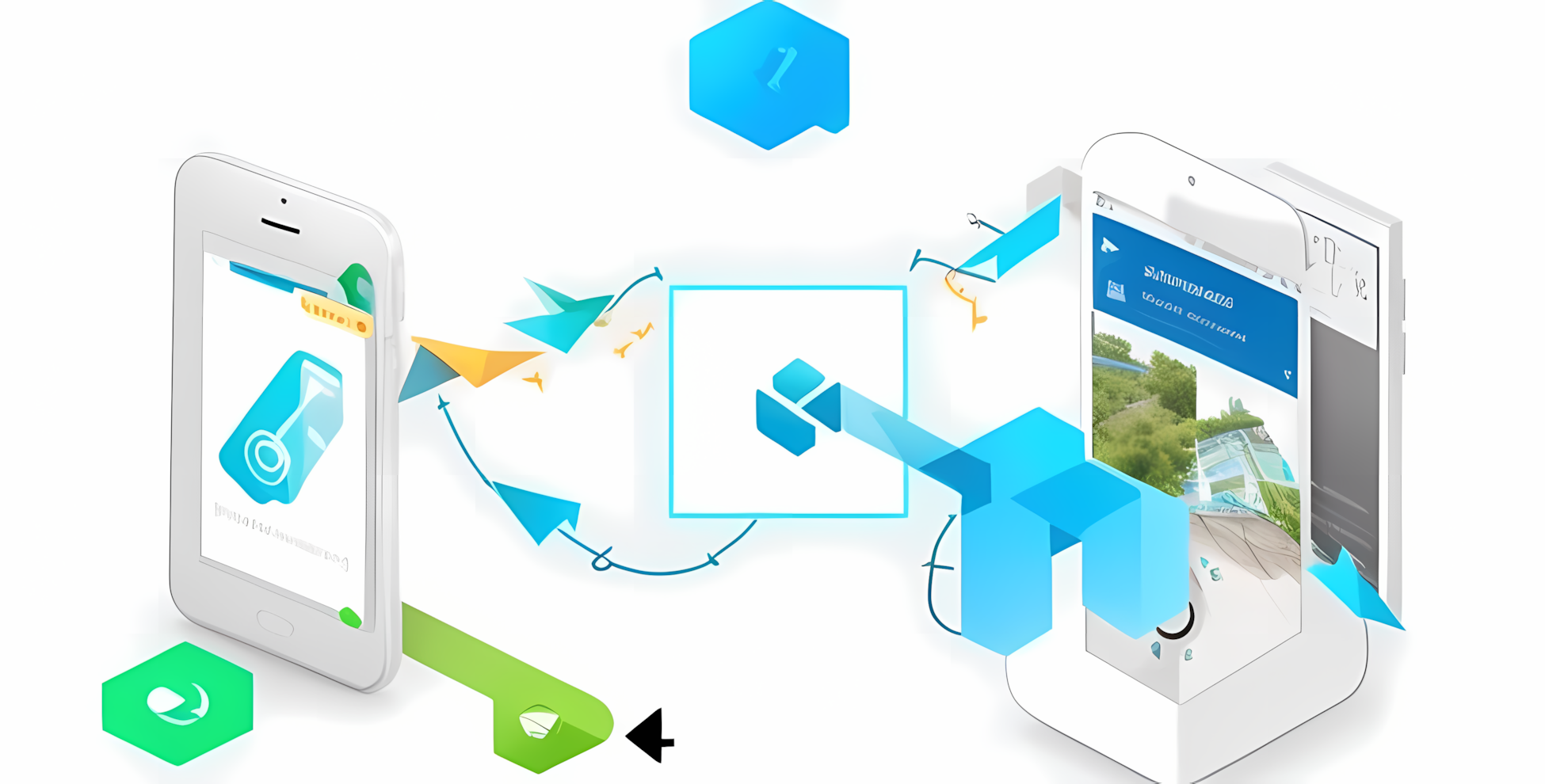Dynamic Linking for Android and iOS: A Comprehensive Guide

In today’s mobile-centric world, having a seamless user experience across different platforms and channels is crucial. Dynamic linking, also known as deep linking, is a powerful technique that allows you to create a seamless transition between your app and other apps or websites. It enables you to send users directly to specific content or activities within your app, providing a more engaging and contextual experience.
What is Dynamic Linking?
Dynamic linking is the process of creating a link that launches a specific part of your app, rather than just opening the app’s main screen. This is particularly useful when you want to direct users to a specific product page, a specific piece of content, or a specific feature within your app.
Benefits of Dynamic Linking
- Improved User Experience: Dynamic linking provides a more seamless and intuitive user experience by taking users directly to the desired content or feature within your app.
- Better Engagement: By making it easier for users to access specific content or features, dynamic linking can increase user engagement and retention.
- Enhanced Discoverability: Dynamic links can be shared across various platforms, such as websites, social media, and messaging apps, making it easier for users to discover and access your app’s content.
- Better Attribution: Dynamic links can help you track the sources of your app installs and user engagement, enabling you to optimize your marketing efforts more effectively.
Implementing Dynamic Linking for Android
For Android, you can use Firebase Dynamic Links or App Links from the Android Developer Documentation. Both technologies allow you to create deep links that can launch specific content or activities within your app.
App Links (Android)
App Links is a feature provided by the Android platform that allows you to associate specific web URLs with specific content or activities within your app. Here’s a high-level overview of the steps involved:
- Configure App Links: Official documentation Android documentation .
- Associate Web URLs with App Content: Define the mapping between specific web URLs and the corresponding content or activities within your app.
- Handle Incoming Links: Implement the necessary code to handle incoming links and navigate users to the appropriate content or activity within your app.
- Android App Links is a feature available on Android 6.0 (API level 23) and newer versions. It allows apps to designate themselves as the default handler for certain types of web links that use the HTTP and HTTPS schemes.
- This streamlines the experience for users when clicking on links that should open in a specific app. Instead of being prompted to pick an app, the intended app launches right away.
How to Set Up Universal Link?
Step 1: Set Up Intent Filters
First, define the intent filters in your Android manifest file (android/app/src/main/AndroidManifest.xml). These filters specify which URLs your app can handle.
<application>
<activity android:name=".MainActivity"
<intent-filter android:autoVerify="true">
<action android:name="android.intent.action.VIEW" />
<category android:name="android.intent.category.DEFAULT" />
<category android:name="android.intent.category.BROWSABLE" />
<data android:scheme="http" />
<data android:scheme="https" />
<data android:host="myownpersonaldomain.com" />
</intent-filter>
</activity>
</application>
Step 2: Create the Digital Asset Links File
Create a assetlinks.json file and host it on your website at https://www.example.com/.well-known/assetlinks.json. Here is sample file format.
{
"applinks": {
"details": [
{
"appIDs": [ "ABCDE12345.com.example.app", "ABCDE12345.com.example.app2" ],
"components": [
{
"#": "no_universal_links",
"exclude": true,
"comment": "Matches any URL with a fragment that equals no_universal_links and instructs the system not to open it as a universal link."
},
{
"/": "/buy/*",
"comment": "Matches any URL with a path that starts with /buy/."
},
{
"/": "/help/website/*",
"exclude": true,
"comment": "Matches any URL with a path that starts with /help/website/ and instructs the system not to open it as a universal link."
},
{
"/": "/help/*",
"?": { "articleNumber": "????" },
"comment": "Matches any URL with a path that starts with /help/ and that has a query item with name 'articleNumber' and a value of exactly four characters."
}
]
}
]
},
"webcredentials": {
"apps": [ "ABCDE12345.com.example.app" ]
},
"appclips": {
"apps": ["ABCDE12345.com.example.MyApp.Clip"]
}
}
Step3. Test Your Implementation:
Ensure that your links open your app correctly and that users without the app are redirected to your website seamlessly.
Implementing Dynamic Linking for iOS
Universal Links
Universal Links is a feature provided by Apple that allows you to associate specific web URLs with specific content or activities within your app. Here’s a high-level overview of the steps involved:
- Configure Universal Links: Follow the official Apple documentation to configure Universal Links in your iOS project.
- Associate Web URLs with App Content: Define the mapping between specific web URLs and the corresponding content or activities within your app.
- Handle Incoming Links: Implement the necessary code to handle incoming links and navigate users to the appropriate content or activity within your app.
Steps to Implement Universal Links
1. Adjust iOS Build Settings
Launch Xcode
Open Xcode.
Open the ios/AppName.xcworkspace file inside your project’s ios folder.
Add the <AppName>DeepLinkingEnabled Key Value Pair
In the Xcode Navigator, expand AppName and click Info.
In the Editor, Control-click and select Raw Keys and Values from the context menu.
Control-click again and select Add Row.
Set the new key properties as follows:
Key: <AppName>DeepLinkingEnabled
Type: Boolean
Value: YES
2. Add Associated Domains
Launch Xcode and Configure Associated Domains
Open Xcode if necessary.
Click the top-level Runner.
In the Editor, select the Runner target.
Click Signing & Capabilities.
Click + Capability under Signing & Capabilities and select Associated Domains.
In the Associated Domains section, click + and enter applinks:<web domain>, replacing <web domain> with your own domain name.
3. Associate Your App with Your Web Domain
You need to host an apple-app-site-association file in your web domain. This file tells the mobile browser which iOS application to open instead of the browser.
Locate Components of the App ID
Apple formats the app ID as <team id>.<bundle id>.
Locate the bundle ID in the Xcode project.
Locate the team ID in the developer account.
For example, with a team ID of S8QB4VV633 and a bundle ID of com.example.deeplinkCookbook, the app ID would be S8QB4VV633.com.example.deeplinkCookbook.
Create and Host apple-app-site-association JSON File
Create a JSON file with the following structure, adjusting the app ID as necessary:
{
"applinks": {
"apps": [],
"details": [
{
"appIDs": [
"S8QB4VV633.com.example.deeplinkCookbook"
],
"paths": [
"*"
],
"components": [
{
"/": "/*"
}
]
}
]
},
"webcredentials": {
"apps": [
"S8QB4VV633.com.example.deeplinkCookbook"
]
}
}
Host the file at the following URL structure: <webdomain>/.well-known/apple-app-site-association.
Ensure that your browser can access this file.
4. Test the Universal Link
Test a universal link using a physical iOS device or the Simulator. Note that it might take up to 24 hours for Apple’s Content Delivery Network (CDN) to request the apple-app-site-association (AASA) file from your web domain. To bypass Apple’s CDN, use the developer keyword like this
applinks:developer.example.com
Testing on Physical iOS Device
Launch the Notes app.
Type the URL in the Notes app.
Click the resulting link.
For iOS, you can use Universal Links or Branch.io. Both technologies allow you to create deep links that can launch specific content or activities within your app.
Best Practices
When implementing dynamic linking, it’s important to follow best practices to ensure a seamless user experience:
- Test Thoroughly: Thoroughly test your dynamic links across different platforms, devices, and scenarios to ensure they work as expected.
- Provide Fallback Options: If a user doesn’t have your app installed, provide fallback options, such as redirecting them to the app store or a mobile-friendly website.
- Track and Analyze: Use analytics tools to track and analyze the performance of your dynamic links, and make data-driven decisions to optimize your implementation.
- Keep Up-to-Date: Stay updated with the latest changes and updates to the dynamic linking technologies you’re using, as they may introduce new features or modifications to existing ones.
References
Android documentation to configure App Links in your Android project.
Universal links for developers.

